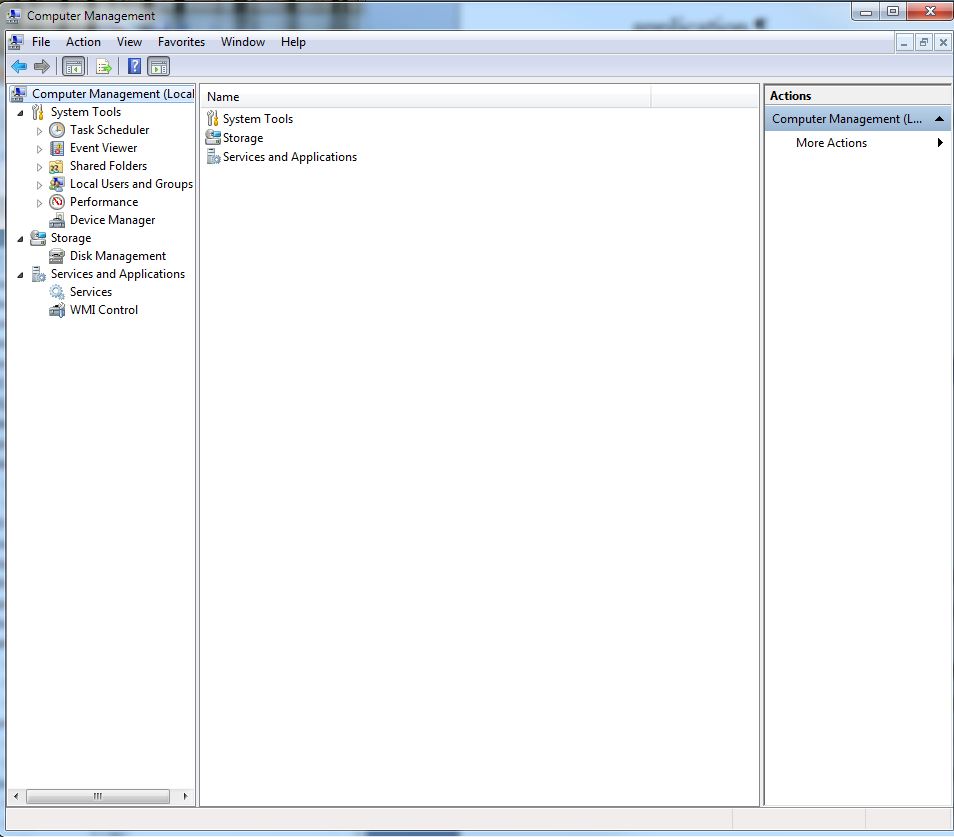Troubleshooting Windows 7 With Microsoft's Built-In Tools
Other Tools: Resource Monitor, Computer Management, And System Info
The Windows Resource Monitor is a useful tool for monitoring overall resource use under Windows. It’s actually not as useful as it was under Windows XP, where power users could easily exhaust available system handles. Still, it’s interesting to check out overall system resource usage; it can help you, for example, determine if adding more memory might be a good thing.
More useful is the Computer Management Console. You can run this by bringing up the Run window and typing "compmgmt.msc."
From the main management window, you can get to a number of useful tools. Using this applet is worth an article or several just by itself, so we’ll mention just a couple of tools in passing.
The first is the System Diagnostics panel, which is under Performance -> System -> System Diagnostics. There’s a wealth of data here to drill into, and most of it, even the ones flagged as errors, aren’t really all that useful. But you do occasionally find nuggets of information that can lead you to problem solutions.
The Services panel (Services and Applications -> Services) shows you a list of services that are running or dormant. This has proven useful a couple of times. For example, I had an early version of Acronis True Image that I’d installed and uninstalled. When I checked the services panel, I found the Acronis License manager running, and consuming memory and resources. So I had to track it down and uninstall it.
System Information is another moderately useful tool, which you can run by typing "msinfo32.exe" in the run window. The most useful bit here is the "Problem Devices" listing. In this example, I’ve got an extra copy of my printer set up, but not active, so I need to uninstall it. I also have a PS/2 keyboard port with nothing attached. This is a little more useful than trying to peruse the Device Manager listings.
This is by no means an exhaustive list of system troubleshooting tools in Windows 7. We haven’t touched on the performance monitor, event viewer, or (if you have Microsoft Office installed), Microsoft Office Diagnostics. All can be useful, depending on how deep you want to dive and what types of problems you’re encountering.
Get Tom's Hardware's best news and in-depth reviews, straight to your inbox.
Understanding what tools are available, however, should help you better solve problems you encounter. The tools in Windows 7 are more comprehensive and easier to use than past versions as well. So before you reach for the phone to call tech support, maybe diving into one of these tools may save you some time and money, plus give you the satisfaction of solving your own problems.
Current page: Other Tools: Resource Monitor, Computer Management, And System Info
Prev Page The Compatibility Troubleshooter-
cryogenic The title of this article should have been "Troubleshooting your **PC** With Microsoft's Built-In Tools".Reply
None of the techniques explained actually troubleshoot windows itself, but applications, drivers, hardware etc. -
cknobman CryogenicThe title of this article should have been "Troubleshooting your **PC** With Microsoft's Built-In Tools". None of the techniques explained actually troubleshoot windows itself, but applications, drivers, hardware etc.Reply
Title of you post should have been:
"I nitpick and bitch about anything and everything." -
ajcroteau This is a great article with a lot of fantastic information. First and foremost.Reply
However, one thing you started talking about was people who were gripping about their computer blaming Microsoft for their problems. These are the people who know little to nothing about computers except how to turn it on, check for email, play a few games, and surf the net. I think a lot of this information is really geared toward people who have a more advanced understanding of computers. For example, you talked about your components starting to fail and they all leading up to an ICH10 component which was most likely the culprit and figured the appropriate course of action was to replace the motherboard... there aren't a lot of people who could have put those dots together. Especially the people blaming microsoft for all their computer problems... -
JohnnyLucky Thanks for an informative article. I am going to be installing Windows 7 this evening. Should be interesting.Reply -
Good Article,Reply
I haven't used 7 yet but Looking at the Action center and Compatibility settings seem amazing.
Really looks like it makes it a lot easier then Event Viewer. -
coldmast This article is good for... um let's say... (better then your) average computer user, but still not really something for people who know their way around the trenches of an OS; all the helpful free third party applications and free support that is out there (in them interwebz').Reply
@ajcroteau: FORUMS(even those on Tom's) are an excellent resource to find out what is really (going on or going) wrong with your computer; though I don't suggest posting until you at least look for a similar circumstance. Somewhere out there -- is a saint! (or a non-religious altruistic computer guru who makes the table scraps that I pride myself on knowing look utterly insignificant) whose got the answer to your burning question; and all you have to do is be polite, patient, and read up on some forum posting guidelines (usually as a sticky note at the top of the forums).
Don't worry I (try to at least) only blame Windows when it's Microsoft's fault. -
volks1470 Yes, I have noticed that Windows 7 does not like extreme overclocking. I'm stuck with a X3 720 @ 3.737GHz, even that BSODs every so often. In XP, I could OC more and get better stability.Reply

